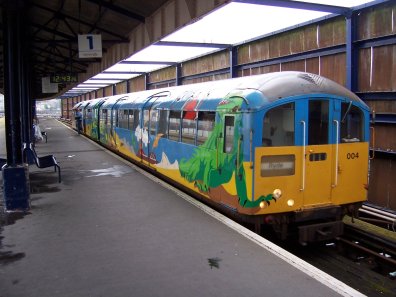That’s three OSs, count ’em. OS OS is their gmaps-like API. It’s in beta, non-commercial and is OSGB projected. Slippy map, markers, bubbles… it’s all there. Someone in the audience pointed out the data quality in the countryside is much better than what’s available now (eg, google). No link as yet.
Category Archives: Ordnance Survey
First commercial OSM usage!
Mikel and I are at the OS in Southampton for a mashup event. Thanks to a lot of work from Mikel and Etienne in producing the tiles nestoria are now using openstreetmap data rendered by osmarender as a google maps layer! This means that when browsing properties you can choose to overlay our map data rather than googles. It’s not perfect but it is an awsome first step and a farsighted decision by nestoria. Check it out here and hit ‘OSM’ in the map type above the map.
This Isle of Wight data used stretches back to the mapping party we held there where 30 or 40 OSMers decended on the Isle to map it in a weekend. A large vote of thanks goes to those people and in particular David Groom for annotating all that data.
At the same time, we can announce mapstraction support for OSM. There’s a demo over here which consists of the same Isle of Wight data. As our data gets broader and in more areas more tiles will be available. Right now, is uses google with some hacks to make it go. The API will remain the same but google will probably be replaced with openlayers at some point. Mikel also got on the fly API switching going, check it out.
GeoDRM: faith-based geospatial computing
We don’t know what it is yet, but there is an interesting discussion going on about it on geowanking.
EuroOSCON podcast
I’m at Euro OSCON where I spoke about open data and of course OSM. There’s an OSM workshop tomorrow too, get in touch if you want to come along. It’s not really an OSM talk, you can listen to it here and the slides are here in a PDF. Enjoy!
Travel Time Maps
MySociety have done some funded temporal travel maps which sort of follow on from Toms tube temporal maps. They interestingly put a veiled critique of the data access they had at the bottom:
‘Although the journey planning services and software we used were publicly accessibly, almost none of the other data is available unless you pay for it, or your work falls under an existing licencing agreement. So while we set out to demonstrate how easily we could make travel-time maps from public data, very little of this work could be cheaply reproduced or extended without assistance from a government department.
That’s unfortunate, because it means that innovative work by outsiders in this area can only go ahead if it’s explicitly sponsored by government. If all the data we’ve used had been available for free, somebody else might well have done what we’ve done years ago, with no cost to the taxpayer. We’d love it if others extend the work that we’ve done, but realistically there aren’t very many people in a position to do this cheaply.’
I guess they can’t bite the hand that feeds them too hard! 🙂
Podcast: David Groom

This podcast has a slightly abrupt start and end as David and I were rudely interrupted by, er, a TV crew. But hey. It was recorded on Friday 5th May on the sunny Isle of Wight (as it was then, the next few days were wet) whilst waiting for people to arrive on the Isle.
Great Quote
Etienne Cherdlu makes an interesting couple of perhaps tounge-in-cheek points against what the OS recently told The Guardian.
>From Thursday’s Guardian article:
“We make an average of 5,000 changes to our large-scale data every day,” said an OS spokesperson. “It’s not about mapping the Isle of Wight once – it’s about continuing to map it … It is expensive to collect detailed, accurate information on the ever-changing world to the level of detail our customers require.”
>From an OSM spokesperson:
“This month we made an average of 6,567 (Note 1) changes to our large scale-data every work day” said an OSM spokesperson. “It’s not about mapping the Isle of Wight once – it’s about continuing to map it … and using enthusiastic and passionate volunteer surveyors we are collecting more information every day with 1,864 registered volunteers than the Ordnance Survey manages to do with a paid full time workforce of 1,490.”
Media
We’re in The Guardian Technology Section today!
Podcast: Ed Parsons
One of the cool things about wordpress 2.0 is that you can drop an mp3 in to it and it magically becomes a podcast, including the RSS feed bits (so yes, you can subscribe to this feed in iTunes). I thought it would be useful to talk to people within openstreetmap and slightly further afield in the geo community as openstreetmap grows beyond everyone knowing each other. If you have a story to tell please get in touch, it’s likely I might ask to talk to you anyway 🙂 You can discuss this cast, and maybe help transcribe it if that’s useful here. The first cast is me speaking to Ed Parsons who is CTO of the OS and says some pretty intersting things, but has detractors. You can find the 21Mb mp3 here. Enjoy.
